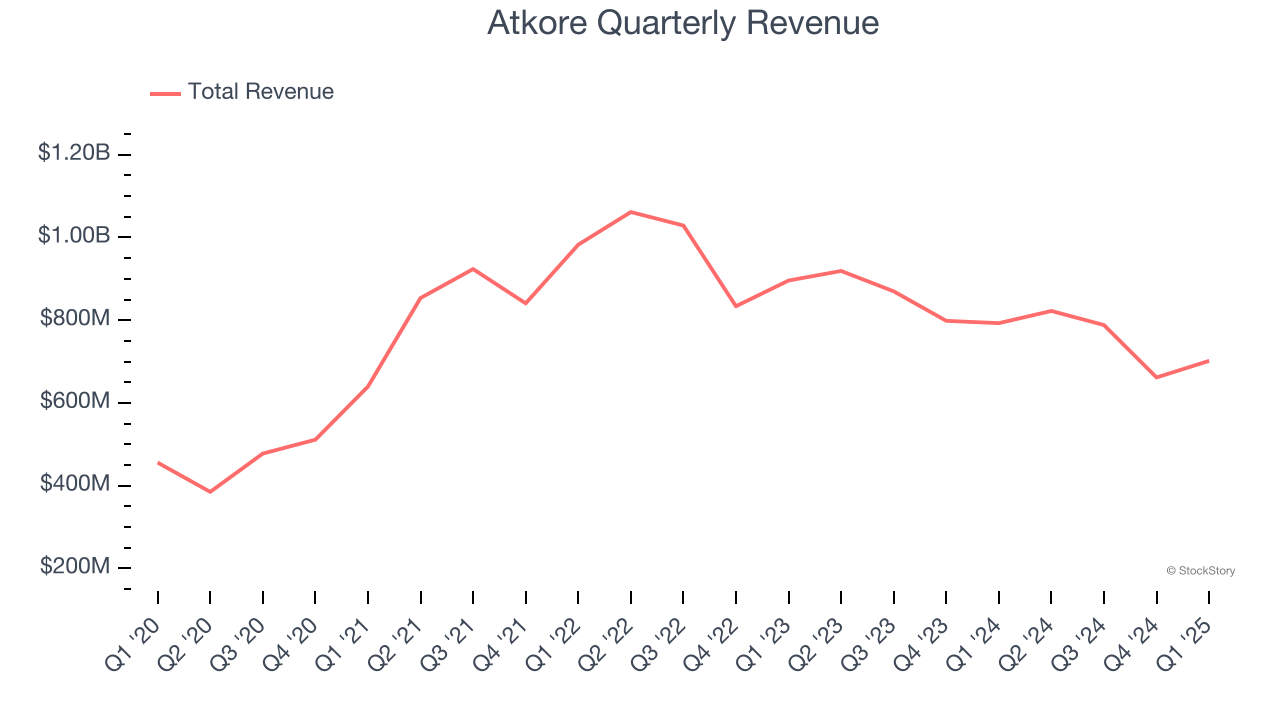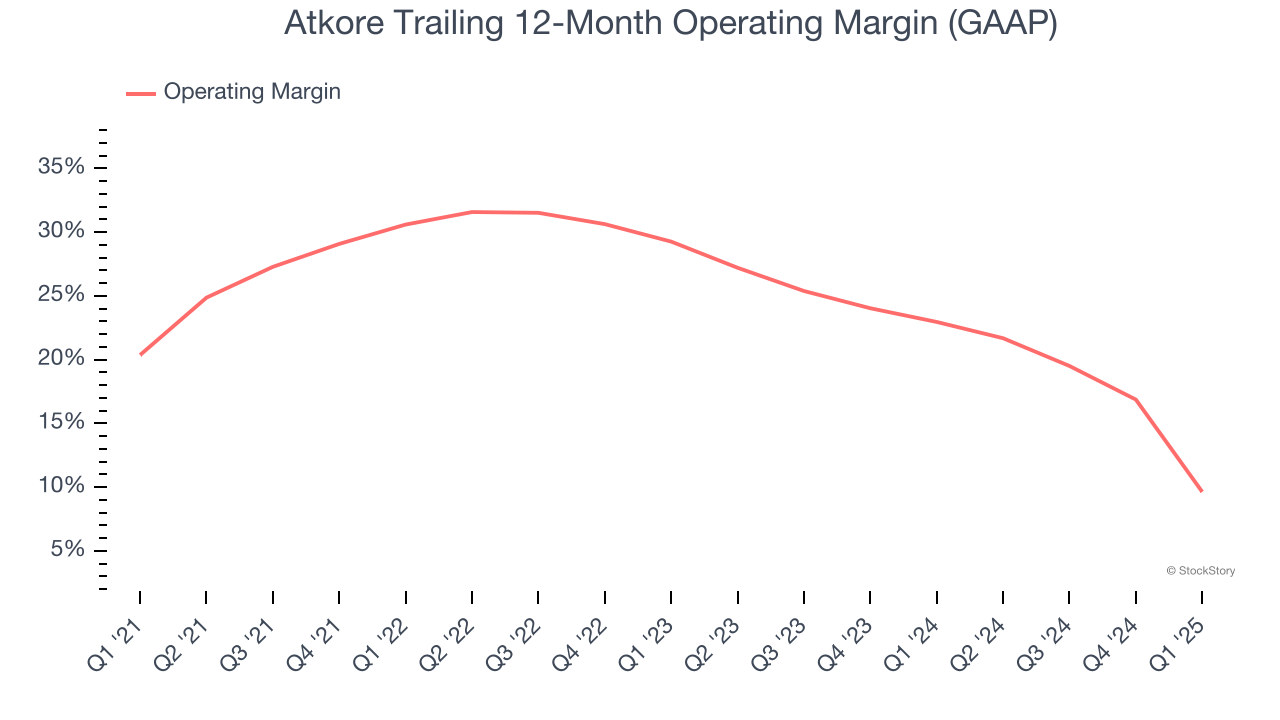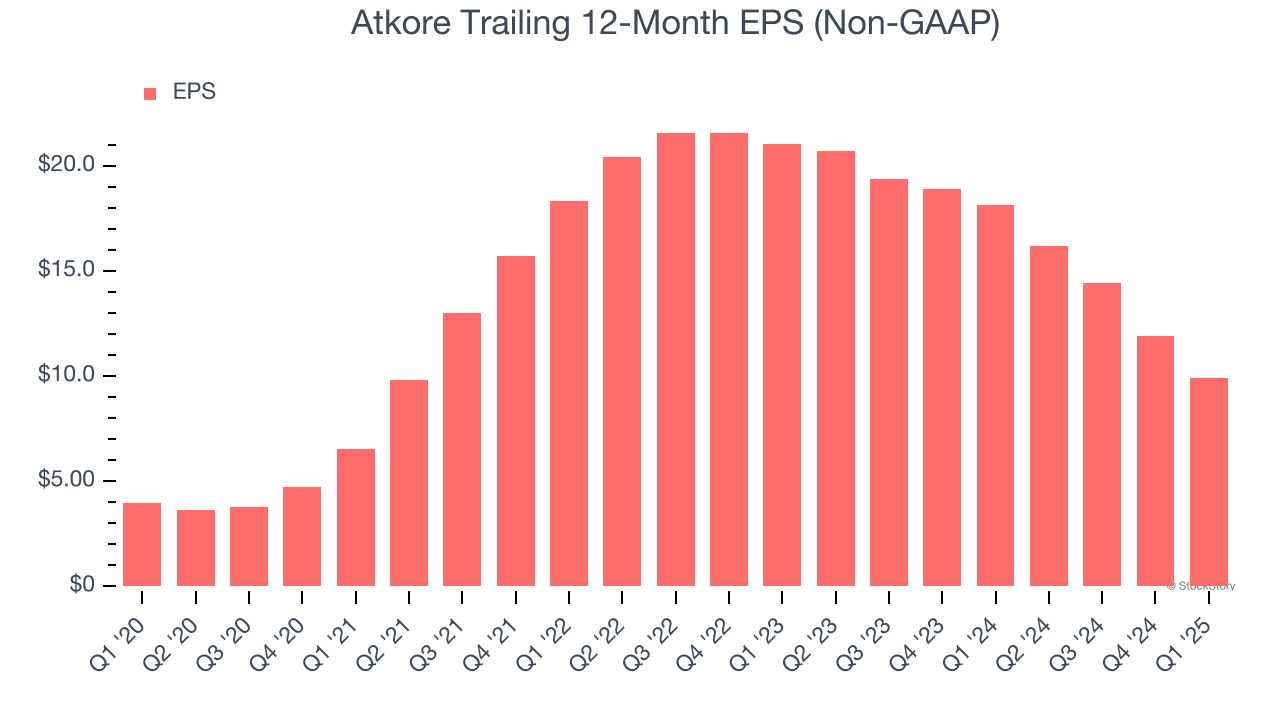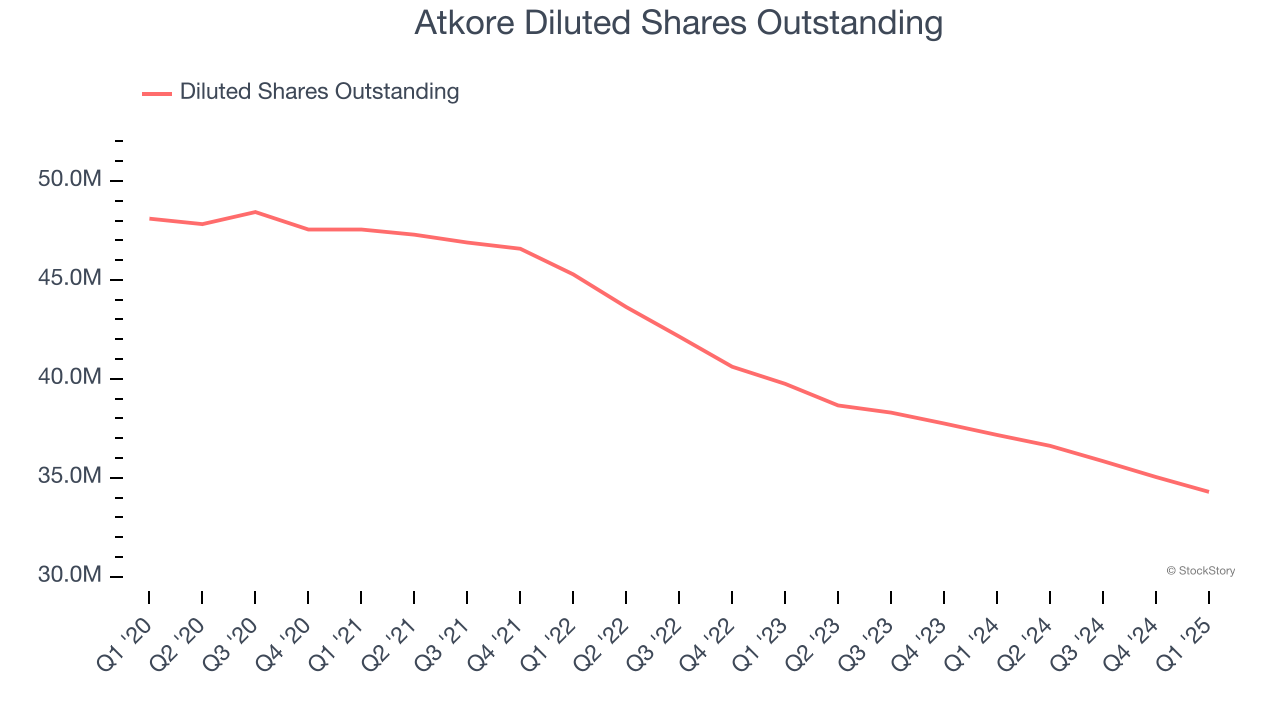
Electrical safety company Atkore (NYSE:ATKR) reported Q1 CY2025 results topping the market’s revenue expectations, but sales fell by 11.5% year on year to $701.7 million. Its non-GAAP profit of $2.04 per share was 15.2% above analysts’ consensus estimates.
Is now the time to buy Atkore? Find out by accessing our full research report, it’s free.
Atkore (ATKR) Q1 CY2025 Highlights:
- Revenue: $701.7 million vs analyst estimates of $697.6 million (11.5% year-on-year decline, 0.6% beat)
- Adjusted EPS: $2.04 vs analyst estimates of $1.77 (15.2% beat)
- Adjusted EBITDA: $116.4 million vs analyst estimates of $105.9 million (16.6% margin, 9.9% beat)
- Management reiterated its full-year Adjusted EPS guidance of $6.30 at the midpoint
- EBITDA guidance for the full year is $400 million at the midpoint, above analyst estimates of $395.5 million
- Operating Margin: -7.4%, down from 22.6% in the same quarter last year
- Free Cash Flow Margin: 9.2%, up from 7.3% in the same quarter last year
- Market Capitalization: $2.32 billion
“Atkore delivered strong second quarter results. We grew organic volume 5% year over year,” commented Bill Waltz, Atkore’s President and Chief Executive Officer.
Company Overview
Protecting the things that power our world, Atkore (NYSE:ATKR) designs and manufactures electrical safety products.
Sales Growth
A company’s long-term sales performance can indicate its overall quality. Any business can experience short-term success, but top-performing ones enjoy sustained growth for years. Thankfully, Atkore’s 9.4% annualized revenue growth over the last five years was solid. Its growth beat the average industrials company and shows its offerings resonate with customers.

We at StockStory place the most emphasis on long-term growth, but within industrials, a half-decade historical view may miss cycles, industry trends, or a company capitalizing on catalysts such as a new contract win or a successful product line. Atkore’s recent performance marks a sharp pivot from its five-year trend as its revenue has shown annualized declines of 11.8% over the last two years. Atkore isn’t alone in its struggles as the Electrical Systems industry experienced a cyclical downturn, with many similar businesses observing lower sales at this time. 
This quarter, Atkore’s revenue fell by 11.5% year on year to $701.7 million but beat Wall Street’s estimates by 0.6%.
Looking ahead, sell-side analysts expect revenue to decline by 3.1% over the next 12 months. While this projection is better than its two-year trend, it's hard to get excited about a company that is struggling with demand.
Unless you’ve been living under a rock, it should be obvious by now that generative AI is going to have a huge impact on how large corporations do business. While Nvidia and AMD are trading close to all-time highs, we prefer a lesser-known (but still profitable) stock benefiting from the rise of AI. Click here to access our free report one of our favorites growth stories.
Operating Margin
Operating margin is one of the best measures of profitability because it tells us how much money a company takes home after procuring and manufacturing its products, marketing and selling those products, and most importantly, keeping them relevant through research and development.
Atkore has been a well-oiled machine over the last five years. It demonstrated elite profitability for an industrials business, boasting an average operating margin of 23.4%. This result isn’t surprising as its high gross margin gives it a favorable starting point.
Looking at the trend in its profitability, Atkore’s operating margin decreased by 10.7 percentage points over the last five years. This raises questions about the company’s expense base because its revenue growth should have given it leverage on its fixed costs, resulting in better economies of scale and profitability.

This quarter, Atkore generated an operating profit margin of negative 7.4%, down 29.9 percentage points year on year. Since Atkore’s operating margin decreased more than its gross margin, we can assume it was less efficient because expenses such as marketing, R&D, and administrative overhead increased.
Earnings Per Share
We track the long-term change in earnings per share (EPS) for the same reason as long-term revenue growth. Compared to revenue, however, EPS highlights whether a company’s growth is profitable.
Atkore’s EPS grew at an astounding 19.9% compounded annual growth rate over the last five years, higher than its 9.4% annualized revenue growth. However, this alone doesn’t tell us much about its business quality because its operating margin didn’t expand.

Diving into Atkore’s quality of earnings can give us a better understanding of its performance. A five-year view shows that Atkore has repurchased its stock, shrinking its share count by 28.7%. This tells us its EPS outperformed its revenue not because of increased operational efficiency but financial engineering, as buybacks boost per share earnings. 
Like with revenue, we analyze EPS over a shorter period to see if we are missing a change in the business.
For Atkore, its two-year annual EPS declines of 31.5% mark a reversal from its (seemingly) healthy five-year trend. We hope Atkore can return to earnings growth in the future.
In Q1, Atkore reported EPS at $2.04, down from $4.08 in the same quarter last year. Despite falling year on year, this print easily cleared analysts’ estimates. Over the next 12 months, Wall Street expects Atkore’s full-year EPS of $9.90 to shrink by 34.6%.
Key Takeaways from Atkore’s Q1 Results
We were impressed by how significantly Atkore blew past analysts’ EBITDA expectations this quarter. We were also glad its EPS outperformed Wall Street’s estimates. Zooming out, we think this quarter featured some important positives. The stock remained flat at $67 immediately following the results.
Atkore had an encouraging quarter, but one earnings result doesn’t necessarily make the stock a buy. Let’s see if this is a good investment. When making that decision, it’s important to consider its valuation, business qualities, as well as what has happened in the latest quarter. We cover that in our actionable full research report which you can read here, it’s free.
